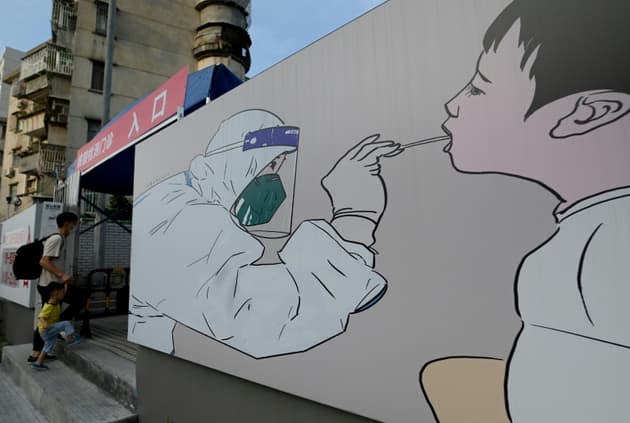Covid-19 in China
Partial lifting of health restrictions in Shenzhen this Friday. Public transport can now resume, as well as administrations and economic activity in five districts of the city, the town hall announced on Thursday evening.
The decision by the mayor of the city of 17.5 million people, located on the doorstep of Hong Kong, comes as President Xi Jinping called on Thursday to “minimize” the impact of anti-Covid measures on the economy Chinese.
The southern city, which brings together thousands of factories of big names in technology, had been placed in total confinement on Sunday following the detection of cases of Covid-19 linked to the current epidemic in Hong Kong.
The transmission of the coronavirus has been stopped in these five districts, which represent almost half of the vast territory of the municipality, argued the municipality.
“Minimise” the impact of the measures
Among the districts concerned is that of Yantian, where one of the largest ports in the world is located, providing alone 10.5% of the containers used by Chinese foreign trade.
The lifting of restrictions in less than a week illustrates the authorities’ concern for economic activity after two years of a “zero Covid” strategy.
President Xi Jinping ordered the continuation of this policy on Thursday evening in order “to stem the spread of the epidemic as quickly as possible”. But he at the same time called for “minimizing the impact of the epidemic on economic and social development”, while Beijing announced for this year its weakest growth target for 30 years (5.5%) .
Rise in cases with Omicron
The zero Covid strategy has made it possible to limit the number of cases of contamination to around 125,000 for two years, if official figures are to be believed. The country officially deplores less than 5,000 deaths and the last death dates back to January 2021.
But the Omicron strain jeopardizes the success of this strategy and the country still reported 4,365 infections on Friday the day before, including 105 in Shenzhen. The northeast of the country, however, remains by far the most affected, with Jilin province, bordering North Korea, having alone reported 60% of the national total of new daily cases.

